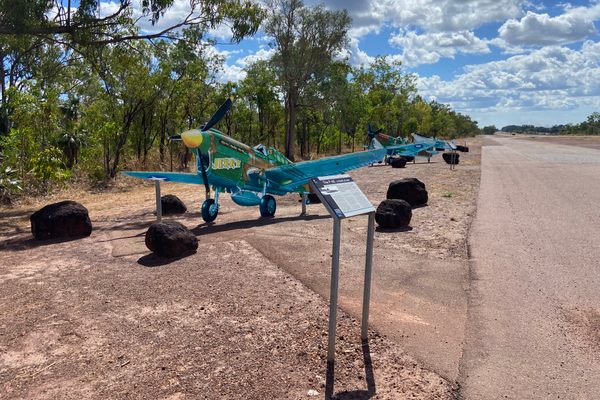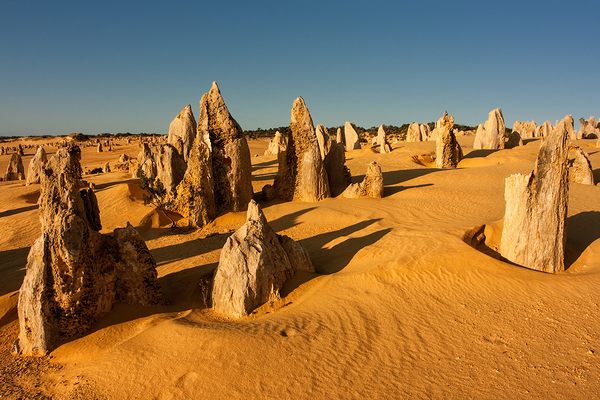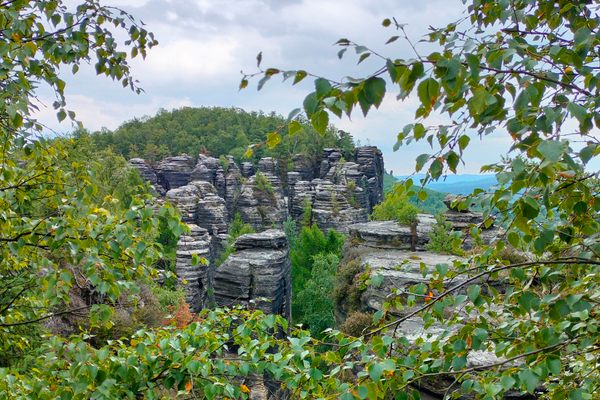AO Edited
Magnetic Termite Mounds
Let these towering termite-building structures tell you where to go.
At first glance, these unusual formations sticking up from the ground in Litchfield National Park look like giant rocks—an easy mistake to make in a place where waterfalls flow through stone, surround placid pools, or stack upon themselves. But these towering structures are actually termite mounds. Think of it like a city made sky-high by tiny insects, but instead of brick and steel, the mounds are made with saliva, sand, and droppings.
The termites start by cutting grass stalks and arranging them around the outside of the mound. They then burrow underground, moving the sediment behind them as they go. The process continues, level by level, until they reach their sky-scraping heights, relatively speaking—they’re still termites, after all.
The magnetic termite mounds can reach around two meters (6.5 feet) high, while the cathedral termite mounds stretch an impressive eight meters (26 feet) high or more; both last for 50 to 100 years. And their unique shape isn’t just a marvel to look at, it is also a feat of engineering. The termites construct the mounds with thin edges pointing north to south, while the broad sides point east to west. This layout minimizes the amount of sun hitting the mounds and keeps the termites at their optimal temperatures. And though the name might imply that the termites have some sort of sticking power, the term “magnetic” comes from the way these tiny insects build their homes, the north-south orientation pointing the way like a compass. There is also some evidence that these termites can sense the earth’s magnetic field, which helps them construct their way-finding mounds.
The mounds also serve as a safe haven for the queen of the colony. Her loyal soldiers defend her and the mound with their saliva, which is clear and sticky and traps any would-be invaders. Termite soldier comes with job security, as the mound dies when the queen does.
The mounds can be viewed from accessible boardwalks off Litchfield Park Road. While in Litchfield National Park you can also visit thundering waterfalls, crystal clear natural rock pools and partake in bush hikes.
Know Before You Go
The Park is about 120 kilometers (approximately 75 miles) south of Darwin. During the wet season, the area can be subject to heavy rain so it’s good practice to check what’s open before you arrive.




















Follow us on Twitter to get the latest on the world's hidden wonders.
Like us on Facebook to get the latest on the world's hidden wonders.
Follow us on Twitter Like us on Facebook